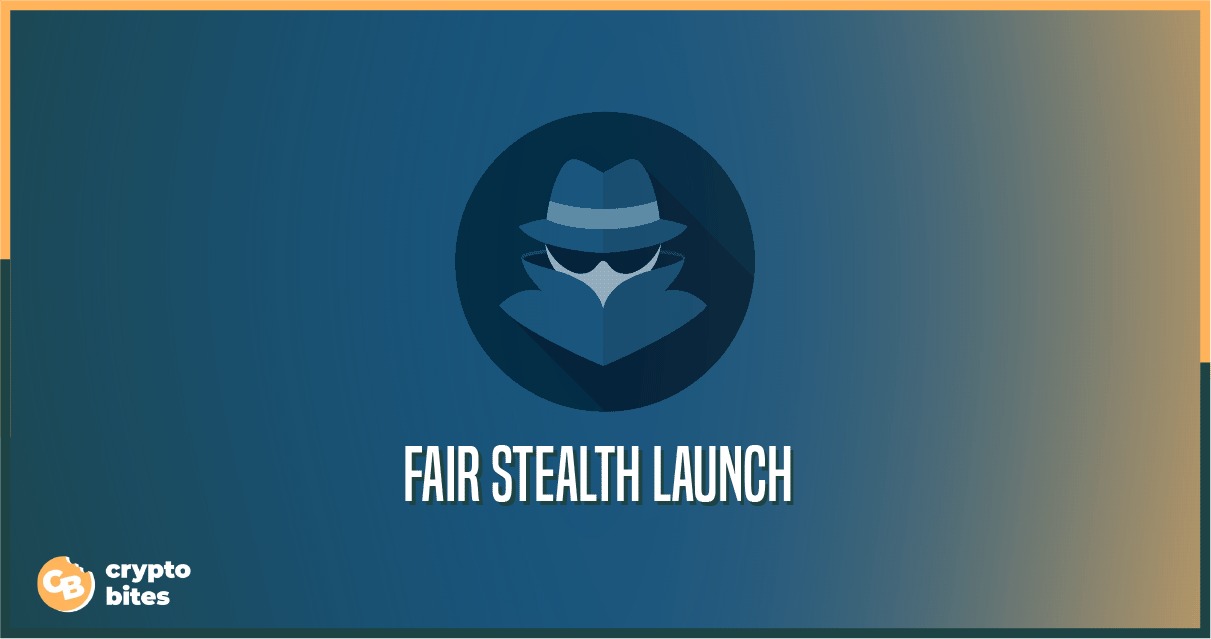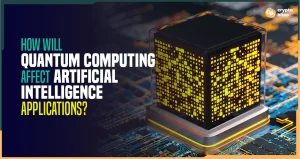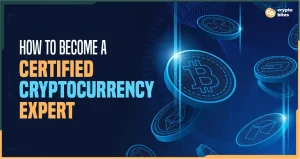
Is Bitrock the Next Big Blockchain? Find Out Why it’s Trending!
Disclaimer: This is not intended as investment advice in any form.
Introduction
In the rapidly evolving blockchain space, layer 2 solutions have emerged as a crucial component to overcome the scalability challenges faced by popular platforms like Ethereum.
One such promising contender in the layer 2 space is Bitrock, an Ethereum IBFT 2.0 side chain that aims to provide near-zero native gas fees and significantly faster block times.
This article delves into the features and potential of Bitrock, analyzing its launch, team, partnerships, and potential market positioning.
Let’s dive right in!
What is Bitrock?
Bitrock is a cutting-edge Ethereum IBFT 2.0 Proof of Authority (PoA) side chain that offers exceptional features for seamless cryptocurrency transactions. With its near-zero native gas fees and lightning-speed block times, Bitrock is designed to provide a cost-effective, scalable, and high-speed infrastructure for its users.
A quick refresh; a side chain is a blockchain that operates on a major (level 1) blockchain.
- In Bitrock’s case, it is a side chain of Ethereum, which means it operates separately but still connects with the native chain Ethereum when necessary.
- Bitrock’s side chain is designed to provide faster and cheaper transactions compared to the main Ethereum network.
- This allows users to enjoy the benefits of the Ethereum ecosystem while offering enhanced performance and additional features, which we’ll talk about in a moment.
A Proof of Authority, on the other hand, is a consensus mechanism used in blockchain networks to validate and confirm transactions.
This means that the transactions on the Bitrock network are verified and approved by a group of trusted authorities, ensuring fast and secure transactions without the need for resource-intensive mining.
The current price of Bitrock stands at $0.060551 and the market volume now stands at $5,544,990 which isn’t bad at all given that it hasn’t even been a month it got released. .
Near Zero Native Gas Fees
Gas fees are a major concern for users when they’re moving to a new blockchain platform. A gas fee, often referred to as a transaction fee, is a cost paid by users when performing transactions on a blockchain network.
If you, for instance, want to send $2000 from your bank account to someone else’s. The bank may charge $5 – $10 processing fee for the transaction to occur. A gas fee is quite similar, it’s just that it happens within a blockchain platform.
Now, the best part about Bitrock is that it has near-zero native gas fees, meaning that your transactions will require only a minimum fee. This sets Bitrock apart from many other blockchain platforms that impose high gas fees, making it a more cost-effective option for users. Very few players in the Blockchain industry can offers such benefits.
With near-zero gas fees, users can freely and efficiently carry out their transactions, whether they involve sending cryptocurrencies, executing smart contracts, or participating in decentralized applications (dApps).
This advantage not only attracts individual users but also makes Bitrock an attractive choice for businesses and enterprises looking to integrate blockchain technology into their operations without incurring substantial transaction costs.
A Fair Stealth Launch
The manner in which a cryptocurrency is launched plays a crucial role in determining its authenticity. Bitrock executed a fair and stealthy launch, enhancing its transparency and trustworthiness. But what do fair and stealthy launches entail, and why are they so important?

Well, a fair launch ensures that all participants, big or small, get an equal chance to acquire the cryptocurrency, avoiding special treatment, pre-sales, or reserved tokens.
A stealth launch, on the other hand, keeps launch details concealed until the launch date, curbing excessive hype and speculation.
As a result, Bitrock:
- Provided an equal opportunity for all participants, preventing preferential treatment.
- Built trust, transparency, and intrinsic value.
- Eliminated the possibilities of manipulation.
All of these qualities have rendered Bitrock more trustworthy to potential acquirers. Its growth is expected to be steady, and fluctuations in the trend will be minimal.
Strengthened Security Through KYC Verification and Rigorous Audits
Despite continuous development and experimentation, security still remains one of the biggest challenges in the crypto world. Bitrock, however, has successfully elevated its security measures through KYC (Know Your Customer) verification and audit procedures, safeguarding its investors against a diverse array of potential threats.

Through the KYC process, Bitrock ensures that its users’ identities are verified, promoting transparency and complying with legal standards. This helps in building a trustworthy environment where participants are accountable for their actions.
In addition, Bitrock’s commitment to security is further reinforced through third-party audits. Independent experts meticulously examine the project’s codebase and infrastructure, identifying and addressing potential vulnerabilities. This proactive approach strengthens the project’s defenses against security threats.
Faster Block Times
Block time, the interval between the creation of two consecutive blocks on a blockchain, holds a pivotal role in shaping the user experience, network throughput, and overall utility of a cryptocurrency.
Bitrock features a super fast 2-second block time, which offers a direct response to one of the most pressing challenges that have long plagued blockchain systems: scalability.
Here’s just one short glimpse of a YouTube comment section. The video is flooded with users’ remarks, all praising the cost-effectiveness and rapid performance of Bitrock:

Traditional blockchains, such as the one underpinning Bitcoin, suffer from sluggish block times, often averaging around 10 minutes per block. This inherent limitation severely hampers transaction throughput, leading to congestion and high fees during periods of peak demand.
Here’s why faster block times hold immense value for Bitrock users and enthusiasts:
- Lightning-Fast Transactions: Faster block times translate directly into quicker transaction confirmations. With Bitrock’s accelerated block times, users can experience near-instantaneous confirmation of their transactions. This seamless and timely interaction enhances user satisfaction and makes engaging with the platform a frictionless experience.
- Scalability and Throughput: Quicker block times facilitate a higher number of transactions processed per unit of time. This scalability enables Bitrock to handle a substantially larger volume of transactions without sacrificing efficiency or inflating transaction costs. As the network grows and adoption surges, the integrity of Bitrock’s performance remains steadfast.
While faster transactions offer the advantage of quicker transaction confirmations, they introduce trade-offs in terms of network stability and consensus. A single short confirmation does not carry the same weight as a longer confirmation in terms of validating a transaction’s legitimacy.
Moreover, shorter block times introduce a higher probability of collisions, which can lead to forks. Forks occur when multiple blocks are created nearly simultaneously, creating competing versions of the blockchain. This can fragment the network’s consensus and undermine the security and integrity of transactions.
In essence, shorter block times introduce a delicate dance between speed and security. While speed is undoubtedly a coveted attribute in the digital age, maintaining a resilient consensus and safeguarding against potential vulnerabilities cannot be compromised. T
Exciting Times Ahead for BROCK Holders
Hold onto your $BROCK tokens, because there’s a lot to look forward to:
- Top CEX Listings: Efforts are currently underway to secure BROCK’s listing on popular cryptocurrency exchanges. It’s already on Uniswap and BitMart. This move will simplify the process of buying and selling, attracting more participants to the ecosystem.
- Revolutionary Multichain DEX Unveiling: Bitrock’s groundbreaking multichain DEX is set to revolutionize trading on the Bitrock platform, ensuring rapid transactions without incurring additional gas fees.
- Collaborations with Other Platforms: Bitrock is forging partnerships with various projects, websites, and platforms that accept cryptocurrencies. This initiative will open up numerous new possibilities for utilizing your $BROCK tokens.
Sphynx Teams Up with Bitrock
Bitrock has just introduced its highly anticipated mainnet bridge, a collaborative effort with wSphynx. This accomplishment is a big step forward for Bitrock, as it opens up effortless access to its strong ecosystem.
This means that entrepreneurs, developers, and investors now have a user-friendly way to launch their projects on the BROCK chain. By doing so, they can take advantage of the platform’s impressive speed and minimal fees. The mainnet bridge is like a spark that’s igniting a wave of creativity and innovation, propelling the growth of an active and dynamic crypto community.
Smooth Test Net and Mainnet
The successful development and deployment of a test net and mainnet are crucial milestones in any blockchain project’s journey. They signify the project’s technical prowess, its ability to deliver on its promises, and its readiness for real-world use. BitRock’s achievements in launching both the test net and mainnet underscore its dedication to creating a functional ecosystem. Let’s delve deeper into the significance of these achievements and their implications for BitRock’s overall success.
Test Net Development
The development and deployment of a test net serve as a pivotal phase in a blockchain project’s lifecycle. The test net functions as a simulated environment where developers can experiment with various features, conduct rigorous testing, and identify and rectify any potential issues before releasing the platform to the public.
Here’s an analogy that explains the process even better:
Think of a blockchain project like baking a cake. The test net is like your kitchen where you try out different recipes, oven temperatures, and baking times before serving the cake to guests. It’s your chance to perfect the cake’s taste, texture, and appearance without anyone seeing or tasting the mistakes. Once you’re confident it’s delicious and flawless, you bring it out to the public (mainnet) with the assurance that it will impress everyone.
So, BitRock’s successful test net development demonstrates several key points:
- Technical Competency: The ability to create and maintain a functional test net showcases the BitRock development team’s technical proficiency. It implies a deep understanding of blockchain architecture, consensus mechanisms, and smart contract deployment.
- Early Problem Detection: By running a test net, the BitRock team could identify and address technical glitches, vulnerabilities, or inefficiencies in a controlled environment. This proactive approach minimizes the likelihood of critical issues arising once the platform is live.
- Iterative Improvement: The test net phase enables developers to iterate and enhance the platform based on real-world testing and user feedback. This iterative process contributes to the development of a more reliable and user-friendly mainnet.
Mainnet Success
The mainnet launch is a critical juncture that signifies the transition from a development phase to actual public usage. A successful mainnet launch demonstrates that the platform is stable, secure, and capable of handling real transactions and interactions.
BitRock’s successful mainnet launch highlights several important aspects:
- Platform Stability: The fact that BitRock’s mainnet is operational and functioning smoothly underscores the project’s commitment to delivering a stable and reliable blockchain solution. Users can confidently engage with the platform, knowing that their transactions and assets are secure.
- User Trust and Confidence: A smooth mainnet launch fosters trust and confidence among users, investors, and partners. It signals that BitRock has followed best practices in development, testing, and security measures.
- Real-World Use Cases: With the mainnet live, BitRock can begin realizing its intended use cases. Real transactions, token swaps, and smart contract interactions demonstrate the platform’s practical applicability and utility.
- User Adoption: A successful mainnet launch can attract more users and developers to the platform, driving adoption and potentially leading to a network effect that enhances BitRock’s overall ecosystem.
In essence, the successful test net and mainnet launches are pivotal achievements that validate BitRock’s technological capabilities, provide a glimpse into its potential, and serve as a foundation for the project’s future growth and development. These milestones are not only indicative of technical prowess but also signal the project’s dedication to building a functional and reliable blockchain platform that addresses the pain points of the existing Ethereum network.
Potential Issues You Should Consider

Bitrock’s debut on the cryptocurrency scene has been met with enthusiasm, but closer scrutiny reveals a series of concerning red flags that warrant caution:
A 4% Buy and Sell Tax
Whenever you purchase cryptocurrency, it’s essential to check DEXTools. You will find a section detailing buy/sell taxes, indicating the percentage for both buying and selling. Generally, more reputable cryptocurrencies have a lower minimum buy/sell tax.
When we examined Bitrock’s buy/sell tax, we were surprised to find a substantial 4% tax for both buying and selling. Unfortunately, this is not a positive aspect. For instance, if you wish to acquire $1000 worth of Bitrock, you will receive only $960 worth, as $40 will be deducted as a buy tax.
Furthermore, when you decide to sell, you will again be subject to a 4% selling tax. This means that even if the price remains unchanged, when acquiring and selling $1000 worth of Bitrock, you will end up with only $921. The remaining $80 will be taken as a tax.
The only way to generate a profit is by investing a significant amount and hoping for a substantial increase in Bitrock’s price.
Unidentified Project Leadership Raises Concerns
Another disconcerting factor surrounding Bitrock’s emergence onto the cryptocurrency scene is the lack of clear and transparent information about the individuals or team responsible for its development and management. While it is not uncommon for newer projects to maintain a level of anonymity in the crypto space, the absence of identifiable figures overseeing Bitrock raises valid questions about accountability and intention.
Investors often seek assurance in knowing who is behind a project, as established and reputable cryptocurrency ventures typically have well-known founders or teams with a track record of success and expertise in the field. The absence of such information can lead to speculation and doubts regarding the project’s legitimacy and long-term viability.
Our Final Take
In summary, Bitrock stands out as a promising layer 2 solution in the dynamic world of blockchain technology. Operating as an Ethereum IBFT 2.0 Proof of Authority side chain, it tackles scalability issues with near-zero gas fees and rapid block times. Security measures such as KYC verification and independent audits further bolster its appeal, and its fair, stealth launch adds to its trustworthiness.
However, certain red flags need to be addressed, including a hefty 4% buy and sell tax, and the lack of transparent information regarding the team behind the project. These concerns can potentially deter prospective investors and users.
To sum up, Bitrock showcases substantial potential as a blockchain platform, with several attractive features and promising developments on the horizon. However, its success may hinge on addressing transparency and tax-related concerns that could otherwise impede its growth and widespread adoption. It’s a platform to watch but with a careful eye on the aforementioned caveats.




